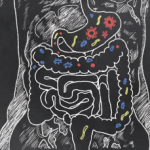In September 2018, I accepted a position as the first rheumatologist at a federally qualified health center in Austin, Travis County, Texas. Caring for patients at that clinic was both the most challenging and the most gratifying work of my career to date. Based on this firsthand experience, this article offers practical advice on the care of uninsured and underinsured patients with rheumatic diseases.
Underserved Patients in Central Texas
Austin is one of the fastest growing cities in the U.S., with 21% population growth over the past decade, according to 2020 U.S. Census Bureau data.1 Texas is not a Medicaid expansion state, and 16.5% of residents under the age of 65 in Travis County are uninsured.2
Uninsured low-income residents in the county can apply for the taxpayer-funded Medical Access Program (MAP), which provides some access to healthcare services, laboratory services and medications.3 Long waitlists for specialty care are the norm. When I arrived, there was only one rheumatologist in the city seeing a handful of MAP patients per month. The rheumatology referral list in November 2020 was 1,245 patients long.4
Rheumatology Care in Central Texas

Dr. Patel
At ACR Convergence 2021, my partner Veena Patel, MD, assistant professor of medicine, Division of Rheumatology, Dell Medical School, University of Texas at Austin, presented baseline data on our rheumatology referral list and the characteristics of the population we served.4
Of the 1,245 referrals received through November 2020, 682 patients were successfully seen in a rheumatology clinic. Of these patients, 80% were female, 67.2% Hispanic and 48% non-English speaking. Only 27% of patients were covered by insurance: Medicare accounted for 5%, Medicaid for 9% and private payers for 13%. The rest (73%) were uninsured and funded by county programs, such as MAP. Nearly half of patients received referrals to establish care for previously diagnosed rheumatic conditions (47%), and 16% of referrals led to new rheumatic diagnoses. Of patients with rheumatic disease, 78% had active disease at their initial visit to our clinic. Perhaps most strikingly, 39% of rheumatoid arthritis (RA) patients had erosive disease at the initial visit.
“A large number of patients came to us after losing access to medical care, and many had never seen a rheumatologist before. Most patients had active, advanced disease [at their] initial visit, requiring immunosuppressive medication initiation or alteration,” Dr. Patel said. “Long lapses in care are common in this community. Creating a healthcare environment where this population has access to regular, timely and affordable care is key to improving their wellbeing.”

